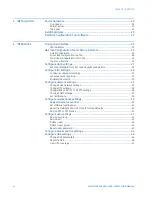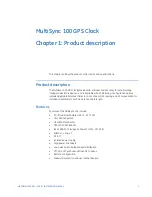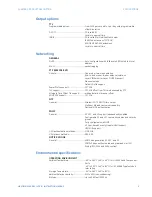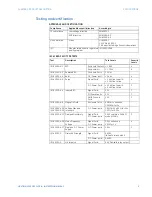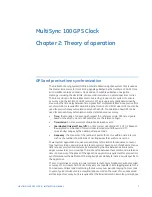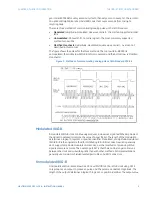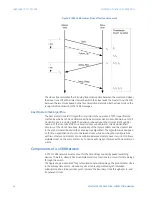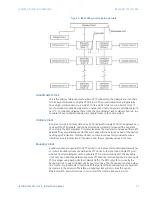
14
MULTISYNC 100 GPS CLOCK – INSTRUCTION MANUAL
IEEE 1588 / PTP / C37.238
CHAPTER 2: THEORY OF OPERATION
Figure 2: IEEE 1588 master-Slave offset measurement
The slave clock calculates the link delay (transmission time between the master and slave),
the slave clock offset (the time interval by which the slave leads the master), and the drift
between the two clocks based on the four timestamps recorded by the slave clock on the
receipt and transmission of the 1588 messages.
Best Master Clock Algorithm
The best master clock (BMC) algorithm is central to the operation of PTP. It specifies the
method by which each clock determines the best master clock in its subdomain out of all
clocks it can see, including itself. The decision is based upon the stratum (clock quality)
number of the local clock (GPS and Atomic clocks are stratum 1), the clock identifier/
accuracy of the clock's time base, the stability of the local oscillator and the closest clock
to the grand-master (based on the spanning tree algorithm). The algorithm was designed
so that no negotiation has to occur between clocks, while ensuring that configurations
with two masters, no masters or an oscillation between masters never occur. BMC allows
multiple clocks on the same system, but a device will only synchronize with one master at
a time.
Components of a 1588 Network
A PTP or 1588 network must account for the time delays caused by packet switching
devices. Therefore, all switches must implement clock functions to account for time delays
through the switch.
The figure shows a possible PTP synchronization network topology. The grandmaster clock
is the primary time source, a boundary clock creates segmented synchronization
subdomains, and ordinary clocks synchronize to the boundary clock through end-to-end
transparent clocks.

